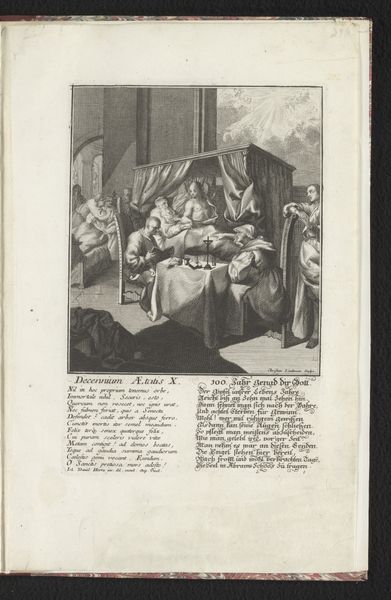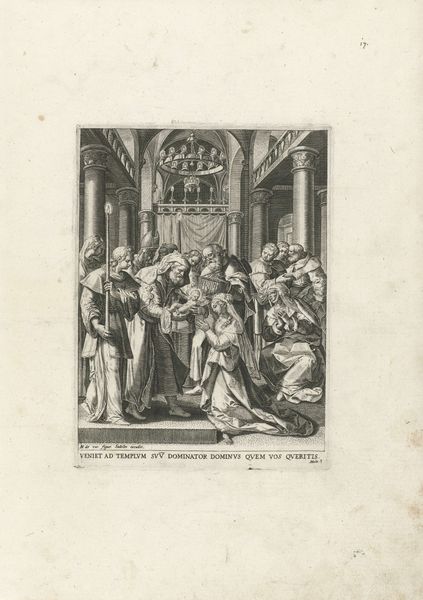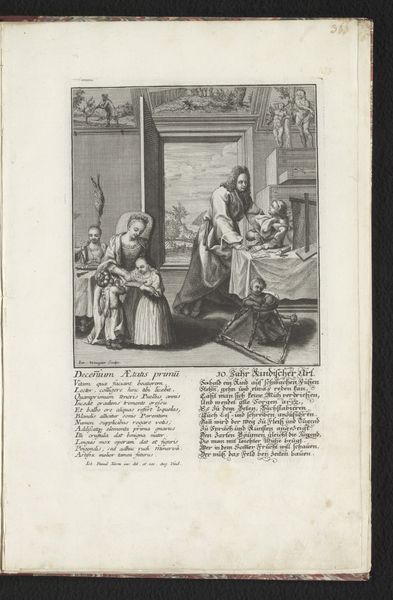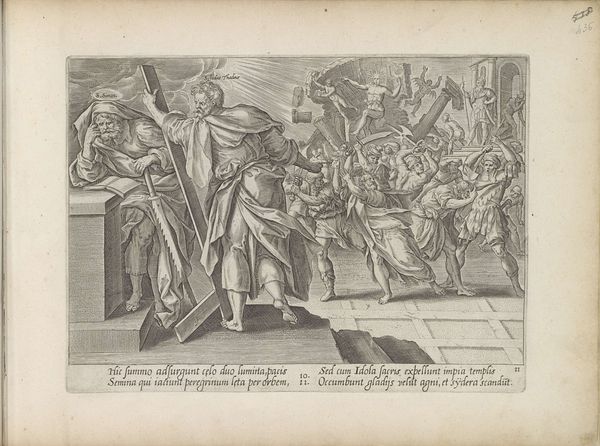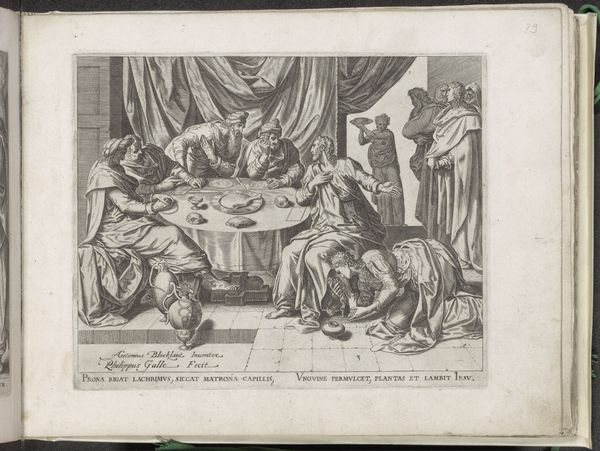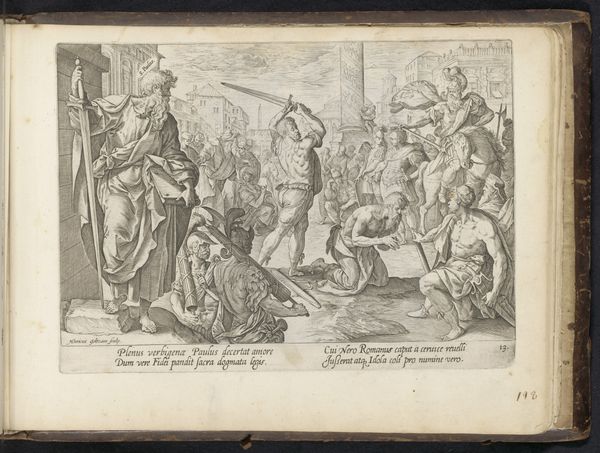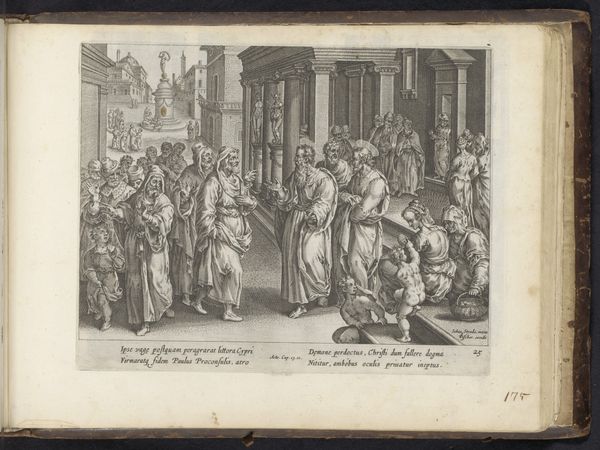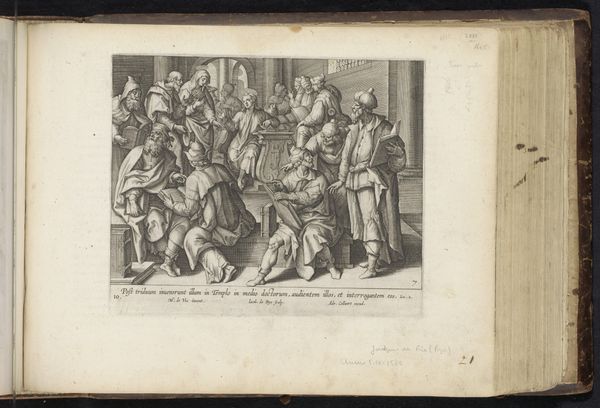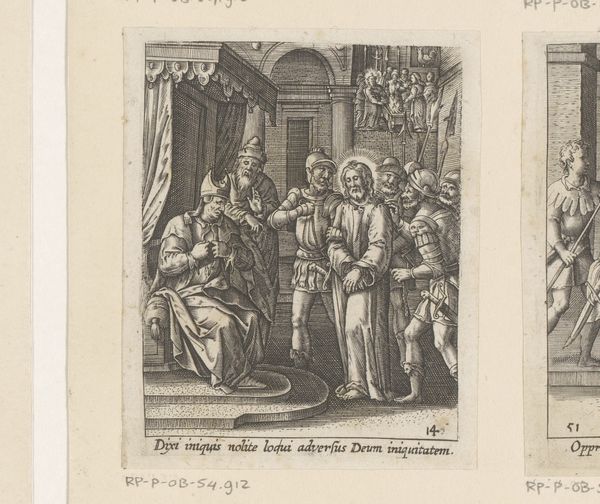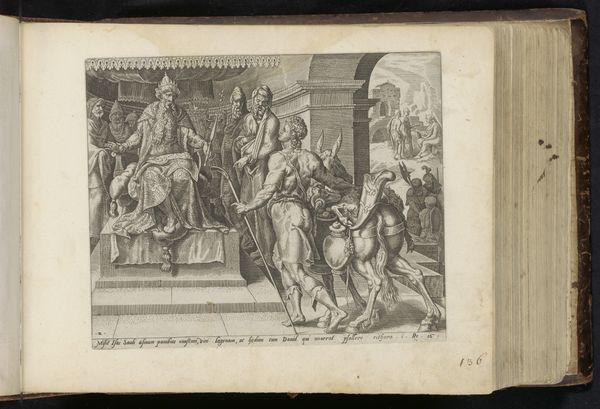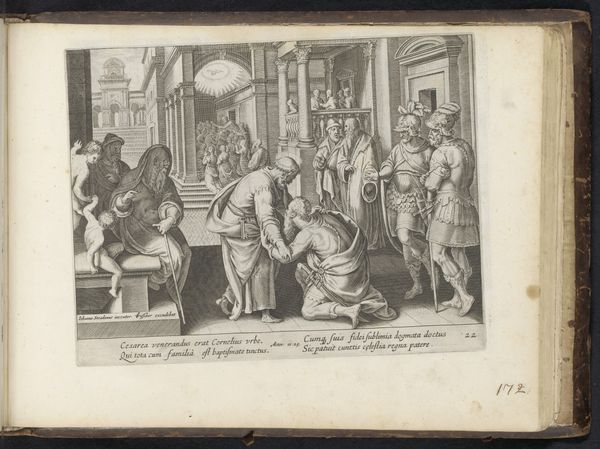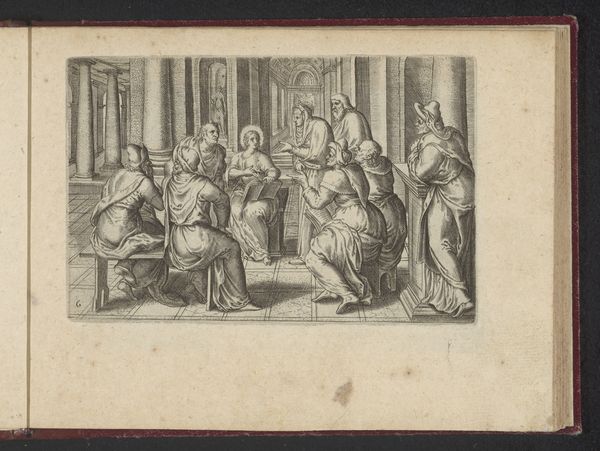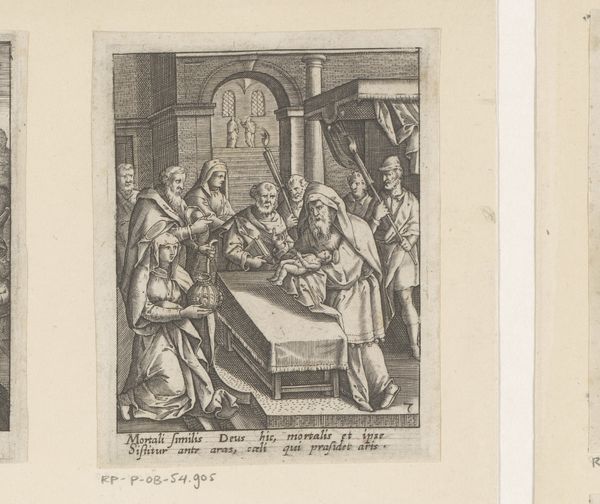
print, paper, ink, engraving
#
portrait
#
baroque
# print
#
figuration
#
paper
#
ink
#
engraving
Dimensions: height 240 mm, width 160 mm
Copyright: Rijks Museum: Open Domain
Editor: We're looking at "De mens op zestigjarige leeftijd," which translates to "The Man at Sixty Years Old," by Christian Philipp Lindemann, dating from around 1725 to 1730. It's an engraving, primarily in ink, on paper. The scene seems quite formal and allegorical...almost theatrical. What strikes you most about this piece? Curator: What immediately grabs me is the staging, the explicit display of power dynamics at play here. We see figures prostrating themselves, presenting something, before an enthroned figure, likely representing authority. What exactly is being negotiated or presented? It makes me consider what this engraving says about social hierarchies and the relationship between the individual and the institutions in place at the time, especially for an individual at the age of 60. Are they pleading? Editor: Yes, it looks almost like a supplication. I'm wondering what kind of authority is at stake here. Curator: It’s interesting to consider this not simply as a personal portrait, but rather as a commentary on the power dynamics in society – the role of the elders within a specific socio-political context. Think about the public role of art in that era – to either reinforce existing hierarchies or, perhaps subtly, to question them. Is the man lying down pleading for forgiveness or for assistance as he has grown old? Editor: That’s a good point; this is more about social commentary than individual personality. Perhaps the artist aimed to subtly critique the structures of power? Curator: Precisely! It prompts us to think about the institutions represented, the power they hold, and how individuals navigated their relationship to that power structure, especially at a vulnerable stage in their life. Does the artist reinforce them or offer a critique? Editor: I now view it more critically, analyzing who holds the power and the potential messages the artwork conveys about authority and dependency. Curator: Excellent. Recognizing the layers of power and how those dynamics shape perception helps to engage with historical prints on a much more nuanced level.
Comments
No comments
Be the first to comment and join the conversation on the ultimate creative platform.
